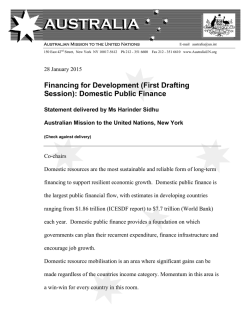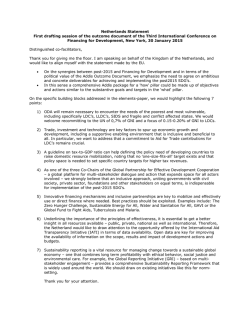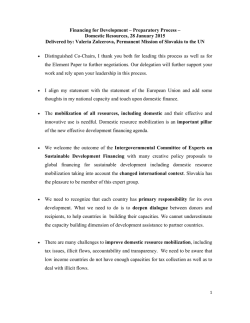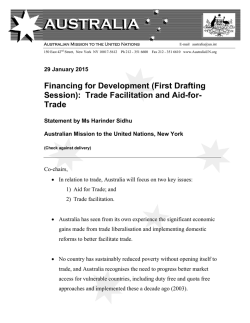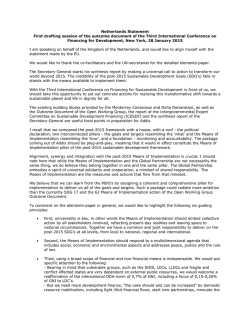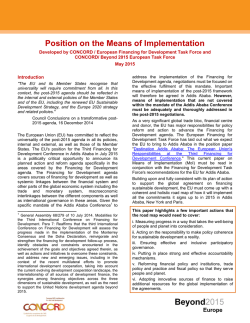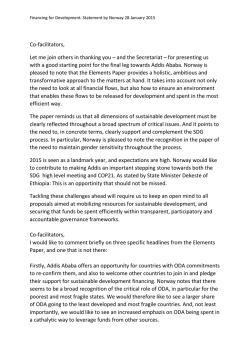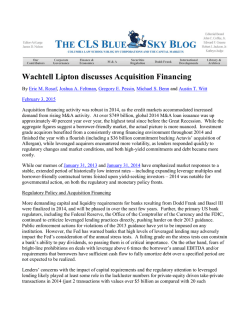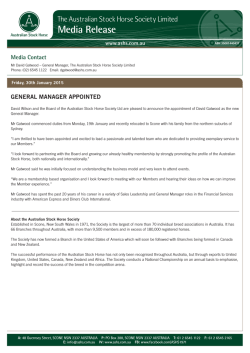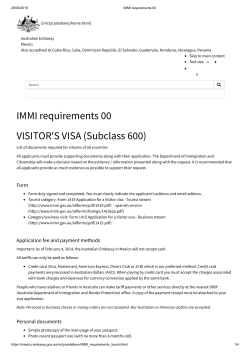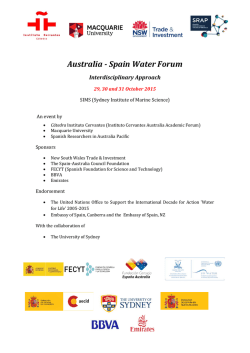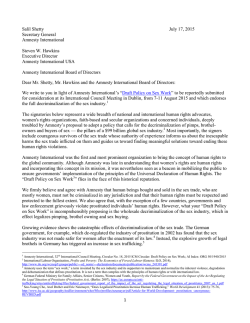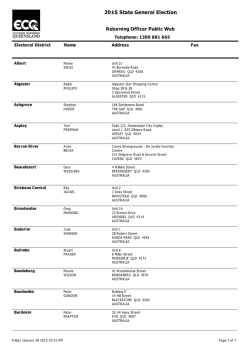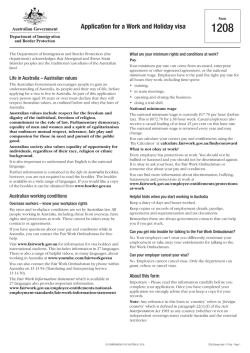
AUSTRALIA
AUSTRALIA AUSTRALIA Australian Mission to the United Nations 150 East 42nd Street, New York NY 10017-5612 Ph 212 - 351 6600 E-mail [email protected] Fax 212 - 351 6610 www.AustraliaUN.org 29 January 2015 Financing for Development (First Drafting Session): Domestic and International Private Finance Statement by Ms Harinder Sidhu Australian Mission to the United Nations, New York (Check against delivery) Co-chairs As mentioned many times in the thematic discussions, in the literature and in this room, the financing needs for sustainable development dwarf the current or even projected availability of public flows of finance. Engaging with private sector issues both at a domestic and international level is nonnegotiable if Financing for Development is to be a success. We have heard that the private sector is not a substitute for public finance. Australia agrees with this entirely. However, the converse is also true. Public finance is not a substitute for a dynamic domestic economy that creates new jobs, funds new businesses and policies that shift incentives and investments towards productive and sustainable development outcomes. Public finance can help leverage these things, but it cannot substitute for either the dynamism and innovation of business or the quantum of finance available through capital markets. We therefore think that this chapter of the zero draft needs to clearly articulate the key aspects of both domestic and international agendas in relation to the private sector. There are clearly areas of overlap – with an enabling environment being conducive to an investment environment and business confidence in both cases. -2However, as the ICESDF report, and a range of work on financing has established (like the World Bank) a number of key actions that should be emphasised by the Addis outcome document as the most critical to significant resource mobilisation, including: 1) Domestic capital market creation, to unlock access to finance for business (ICESDF report, p 25) 2) Cultivating an enabling environment to support business activity, including financial inclusion activities that target key development groups, such as households, SMEs and gender based finance (ICESDF report, p 23-24) 3) Strategically engaging in partnership arrangements, and institutionalising these arrangements to consolidate technical assistance, knowledge development and project structuring and financing – often in project preparation facilities for PPPs and other blended finance approaches (ICESDF report, p 33-36) Financing flows from domestic private sector development are often more stable flows which will facilitate wealth creation and expand the tax base for domestic resource mobilisation. At the international level, many of the same policies and tools will need to be utilise to facilitate foreign direct investment. FDI also provides additional dimensions, as it facilitates technology cooperation and spillovers. It is therefore in this vital chapter in the outcome document that we see non-financial means of implementation being the driver of large financial flows that are outside the public sectors direct control, but that can be directed towards sustainable development outcomes. There are strong, practical and fundamental links here between capacity building, knowledge sharing, technical assistance, technology cooperation and the resulting shift of large financial flows. Australia would like to now turn to a quite practical suggestion where many of these issues intersect, and have clear links to the SDGs, namely in relation to infrastructure investment – a sector which has a cross-cutting role across not only the sustainability agenda, but also provides a foundation for the goals on cities, health, education, growth and poverty eradication. We all know that infrastructure investment in developing countries, including both LICs but MICs is acute: The World Bank Group (WBG) estimates that between 2014 and 2020 up to US$1.3 trillion per year may be required to meet infrastructure demands in developing countries. The Organisation for Economic Co-operation and Development (OECD) estimates that US$800-900 billion per year is currently being spent on infrastructure in these countries. Action to address this kind of investment gap will require a strong understanding of the barriers and to explore a range of issues around financial and non-financial MOI. -3 A large range of organisations are looking at these significant challenges, such as the G20 have placed a very strong emphasis for infrastructure investment. Australia would support further thought being given to similar approaches in the lead up to Addis. Thank you.
© Copyright 2026
